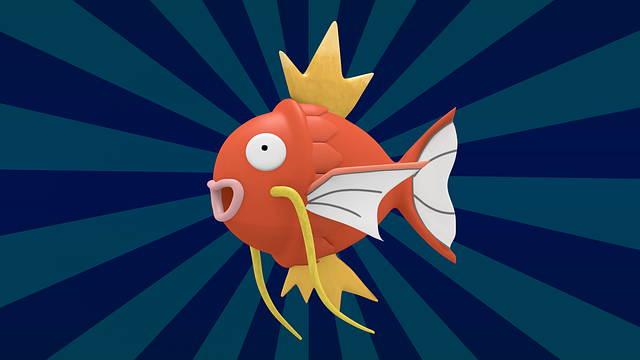Pokémon may be fiction, but some of these lovable monsters aren’t so far-fetched when you compare them to real-life animals. From electric fish to flaming birds, science has a surprising way of making Pokémon seem… well, kinda realistic.
Here are 12 Pokémon that could totally exist in real life—and the real-world biology behind them.
1. Pikachu – Electric Mouse Pokémon
Real-world counterpart: Electric eel (Electrophorus electricus)
Pikachu generates electricity in its cheeks, which it releases in bursts. In real life, the electric eel can release shocks of up to 600 volts to stun prey—proving that bioelectricity is not only possible, but very effective.
2. Magikarp – The Flopping Fish Pokémon
Real-world counterpart: Asian carp
Magikarp is known for its dramatic flops and apparent uselessness—until it evolves into Gyarados. In real life, Asian carp are invasive, notorious for jumping out of the water when startled, and capable of traveling long distances upstream. Not so useless after all.
3. Vileplume – The Flower Pokémon
Real-world counterpart: Rafflesia arnoldii (a.k.a. the corpse flower)
Vileplume’s massive flower emits a foul odor to attract prey. The Rafflesia does exactly that—its bloom can grow over 3 feet wide and smells like rotting flesh to lure in flies for pollination. Sweet dreams.
4. Gligar – The Flying Scorpion Pokémon
Real-world counterpart: Flying squirrel + scorpion
Gligar may look like a fantasy, but gliding mammals like the colugo or flying squirrel already soar between trees. Add a scorpion’s claws and stinger and voilà: your real-life Gligar (but hopefully less bitey).
5. Squirtle – The Water Turtle Pokémon
Real-world counterpart: Red-eared slider turtle
Squirtle’s shell, aquatic lifestyle, and playful attitude match many freshwater turtles, especially the red-eared slider. It’s one of the most popular pet turtles and has the same mischievous energy as our blue-shelled friend.
6. Noivern – The Sound Wave Dragon
Real-world counterpart: Egyptian fruit bat + sound-based animals
Noivern uses ultrasonic waves for navigation and attacks. Real-world bats use echolocation to “see” in the dark—some with such precision they can track a mosquito in flight. Dolphins and certain birds use similar sonar techniques.
7. Poliwag – The Tadpole Pokémon
Real-world counterpart: Glass frog tadpole
Poliwag’s transparent skin and spiral belly mimic real glass frog tadpoles, whose guts are often visible through their translucent bodies. They’re just missing the cute swirls!
8. Talonflame – The Scorching Fire Bird
Real-world counterpart: Peregrine falcon + oilbirds
While we don’t have literal firebirds, peregrine falcons dive at speeds over 200 mph, making them nature’s fighter jets. Combine that with oilbirds, which nest in caves and have fiery-red eyes in low light, and you’ve got a grounded Talonflame.
9. Ludicolo – The Carefree Dancing Duck
Real-world counterpart: Duck + pineapple + party vibes
Okay, hear us out—Ludicolo is an oddball, but in biology, we’ve seen ducks that dance, frogs that sing to attract mates, and even axolotls with permanent smiles. Ludicolo is basically nature’s extrovert, mashed into one creature.
10. Joltik – The Tiny Electric Bug
Real-world counterpart: Tardigrade + electric spiders
Joltik is a tiny, electricity-loving spider. Some real spiders can sense electromagnetic fields, and tardigrades (microscopic organisms) can survive radiation, space, and freezing. Combine their toughness and scale, and Joltik isn’t that far off.
11. Chinchou – The Angler Pokémon
Real-world counterpart: Deep sea anglerfish
Chinchou’s glowing antennae lure in prey in dark waters, just like the deep sea anglerfish. These eerie creatures live in the ocean’s abyss and use bioluminescent lures to hunt in total darkness.
12. Sandslash – The Spiny Ground Pokémon
Real-world counterpart: Pangolin
Covered in protective scales and known for its digging, Sandslash is basically a cartoon pangolin. Pangolins can curl into a spiny ball and use strong claws to burrow—exactly like their Pokémon twin.
🧪 The Science Behind the Fantasy
Many Pokémon are inspired by real animals, plants, and behaviors. The creators at Game Freak have clearly done their biology homework—because some of these creatures are eerily close to reality.
So the next time someone tells you Pokémon aren’t real, you can hit them with some zoology and say, “Not yet.”


